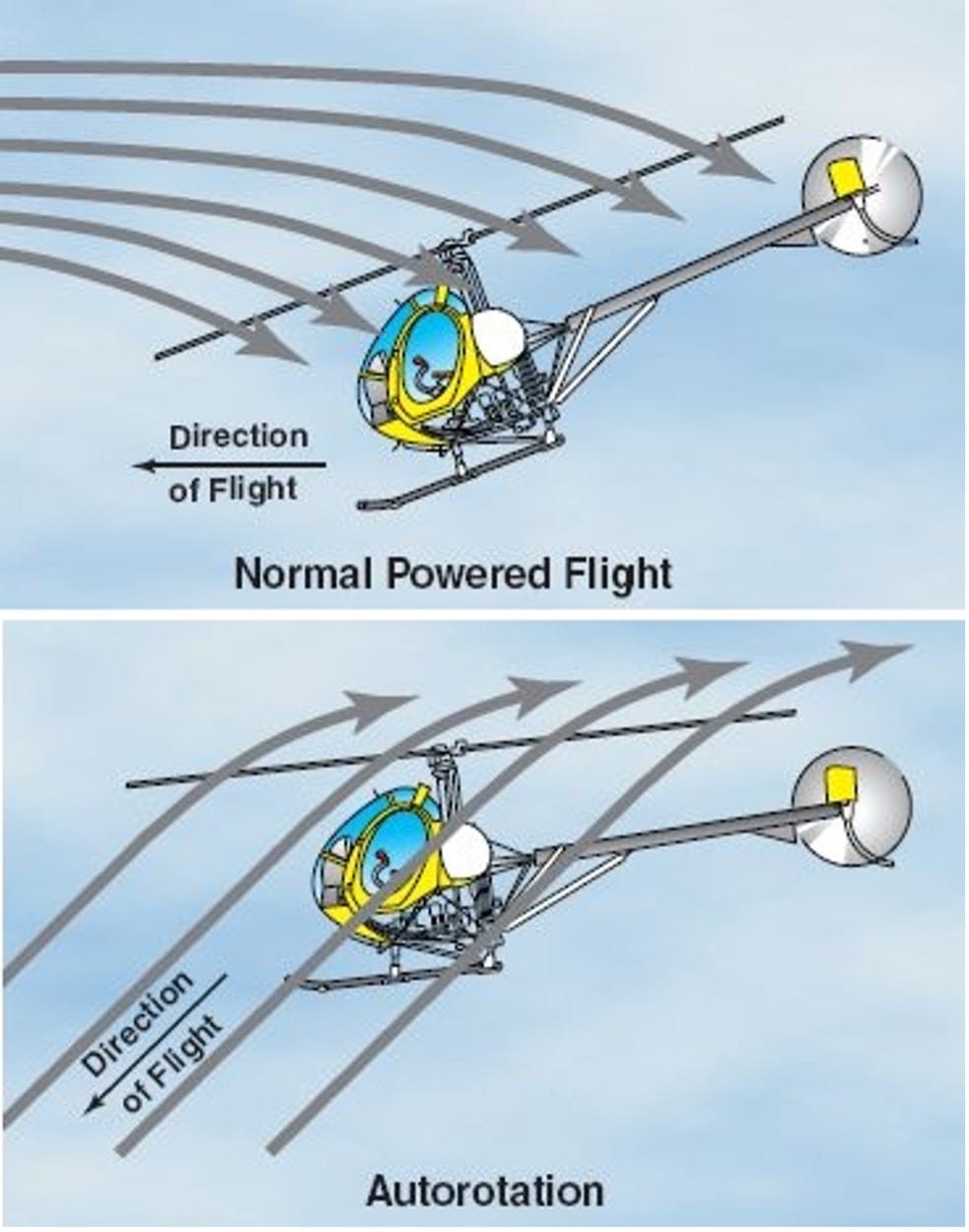When you think of flying, what comes to mind? Planes, rockets, helicopters, and chicken fingers. Scratch that last one I read the question wrong. So far in this newsletter, we’ve covered how planes fly using their wings and what the flight of a rocket looks like. But we haven’t said a thing about helicopters. There’s been plenty of news in the past few years about them, crashing being the unfortunate mainstay, but are those crashes common? Are helicopters as dangerous as they seem?
First, let’s look at how they fly. The rotors are essentially giant fans and the blades are essentially thin wings. Planes generate lift by propelling themselves forward and once there’s sufficient air passing by them, the wings do the rest. Helicopters don’t have that luxury. The only engine they have is facing up. Instead of moving the air over the wings, they move their wings through the air. By rotating the rotors, they can generate the same kind of lift that a plane does!
This works great to get off the ground, but once there’s no friction between the wheels and the tarmac, something weird starts to happen—it spins. Remember that guy Isaac Newton? He once, very wisely, said that for every action there’s an equal and opposite reaction. When the engine tries to turn the rotor after the helicopter leaves the ground, there’s nothing to counteract and stabilize it. Here’s what that ends up looking like: [1]
Not too fun. The good news is we have a very clear way to fix this: a tail rotor. These are the vertically oriented rotors at the very back of the helicopter. They provide a thrust force in the opposite direction of the force applied by the engine. This allows just the top rotors to spin, not the whole aircraft.
Now that we have a basic understanding of how they work, are they actually that dangerous? The first risk, as we saw above, is the tail rotor failing. If this happens, it can actually be recovered easily if you act on it soon enough. Turning the rail rudder and decreasing power will both reduce the potential rotation. The other huge issue is the main engine breaking. Unlike planes, if the engine stops, you can’t just glide to safety. Your helicopter has just magically turned into an extremely expensive lawn dart.
Luckily for us (and most of all helicopter pilots), the people who make helicopters thought of this. Albeit miraculously, helicopters can glide and even land safely if their main engine stops working. Sometimes, they can glide even more effectively than planes. This is accomplished using something called autorotation. When a helicopter engine breaks for whatever reason, the rotors immediately detach. Not detach as in eject; more like throwing it in neutral. The rotors are allowed to spin freely. Now, instead of taking above air and pushing it down for lift, the rotors are fed air from below as they descend. This rising air continues to spin the rotors (because of their shape). Rotors are designed such that, above a certain airspeed, this rotation caused by the passing air is enough to make a controlled, and sometimes lengthy, descent to land. [2]
This all has been a promising argument for helicopters. Unfortunately, in recent history, they haven’t had the best track record. As we usually do, let’s finish off with some statistics.
According to MedPage, the chances of being in a fatal car crash, traveling an average distance of 50 miles, is about 0.00005%. That means you’d have to drive 100 million miles to be statistically likely to be in a fatal crash. That’s orders of magnitude more than any of us could reasonably do in our lifetime. Sadly, though, that’s still pretty common. Compare this to planes—that same roughly hour-long trip puts you at a 0.000005% chance of being in a fatal crash. Ten times less likely than taking the car. [4] Lastly: helicopters. That same trip via helicopter places you at about a 0.001% chance of being in a fatal crash. That’s 1 out of 100,000. That number looks even larger when compared to the other modes of transportation. [3] That’s 20 times more likely than by car and 200 times more likely than by plane. These numbers show that helicopters aren’t the safest method of travel. But remember, you’re not just a rock in the sky if something goes wrong. There are thousands of fail-safes in place that result in you needing to fly back and forth between New York and Boston 80,000 times before being in a fatal crash.
All in all, helicopters are an extremely convenient method of transportation. The convenience, however, does come with increased danger. Like cryptocurrency, cashing in on these benefits comes down to your tolerance for risk. Thank you for reading this week’s edition of It’s Not Rocket Science. Don’t forget to subscribe if you haven’t already. See you next week!
Check out last week’s edition about Beaming Energy from Space here.
For more details…
[1] https://imgur.com/gallery/5bUFa4E
[2] https://en.wikipedia.org/wiki/Autorotation
[3] https://www.medpagetoday.com/publichealthpolicy/generalprofessionalissues/84627
[4] https://injuryfacts.nsc.org/home-and-community/safety-topics/airplane-crashes/






but what about propellor hats? you never said if those are safe or not
Made me think of our helicopter ride around Seattle ~ super cool!